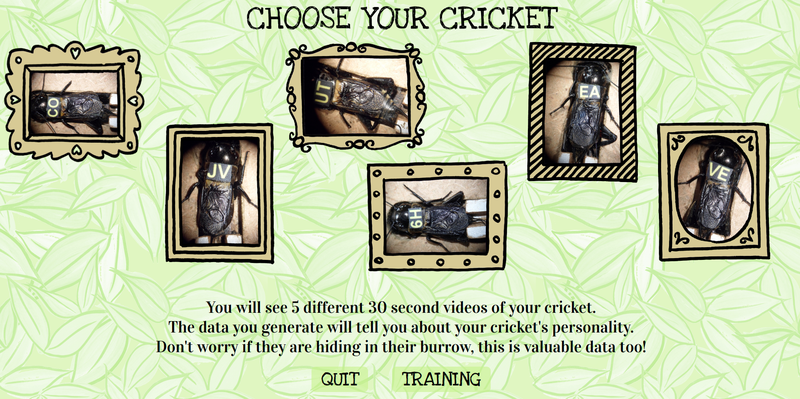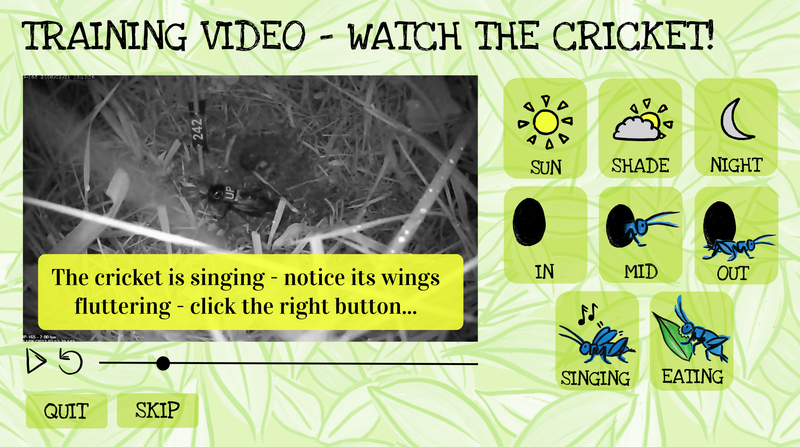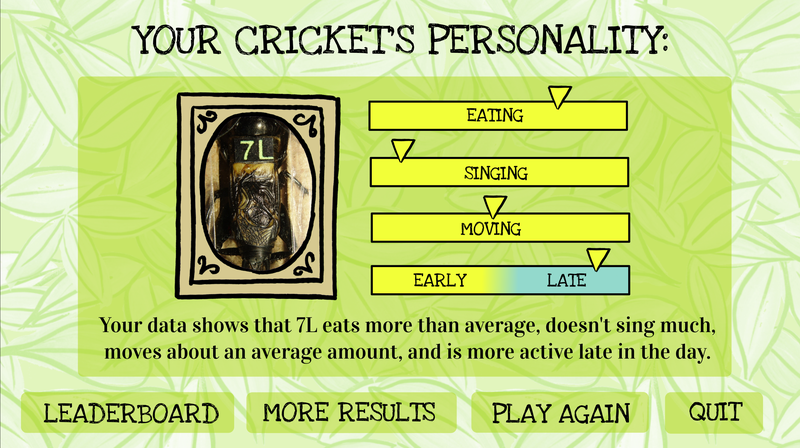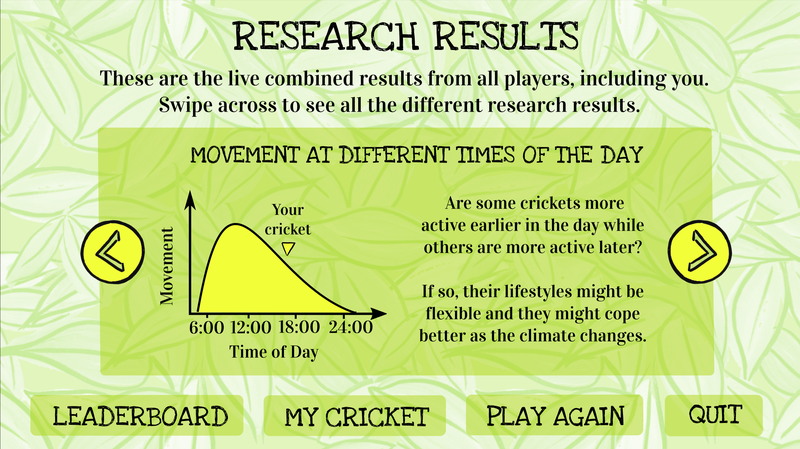Cricket Tales
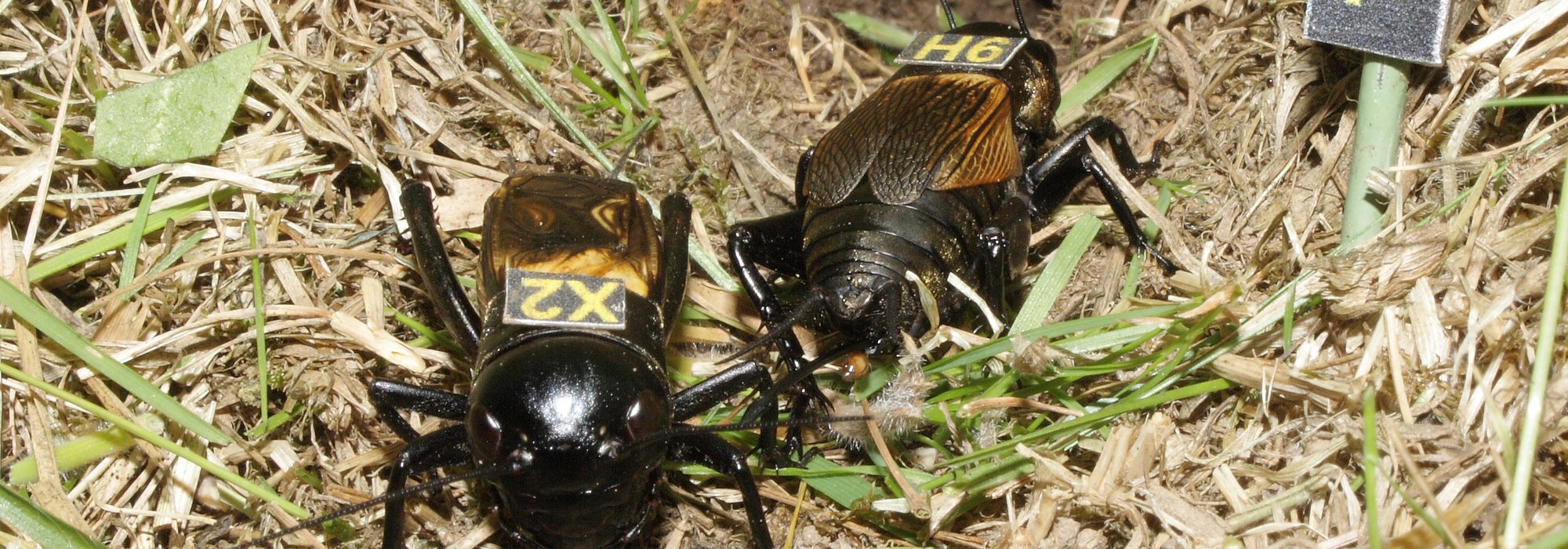
In a secret field in Northern Spain, hundreds of cricket burrows are monitored using CCTV. This is the first long-term study on the behaviour of wild insects, run by the Wild Crickets research group at the University of Exeter.
Cricket Tales is a crowdsourcing project made in collaboration between Then Try This and researchers at the University of Exeter, funded by the Natural Environment Research Council. An online system walks players through how to identify insect behaviours, then players tag these behaviours in the cricket CCTV videos, contributing directly to research. At the end of each game play the latest results are displayed, including the data just contributed, making the player the first person in the world to see the latest research results. The results show the crickets' personalities, and the data is used to see how flexible their lifestyles are, and how insects might cope as our climate changes.
Cricket Tales has been installed for several years at the Eden Project (on our permanent screens in the Invisible Worlds building), you can also play online and access the source code.
A new schools version is now available designed specifically for teaching in schools at Key Stage 3 on the topics of biological variation, graph/data interpretation, and sample sizes. Teaching materials to go alongside this are also now available as a free full lesson plan, developed in collaboration with Chris Bisson (Programme Lead at Eden Project Learning) and Janine Bisson (STEM Project Coordinator at Cornwall Council).
